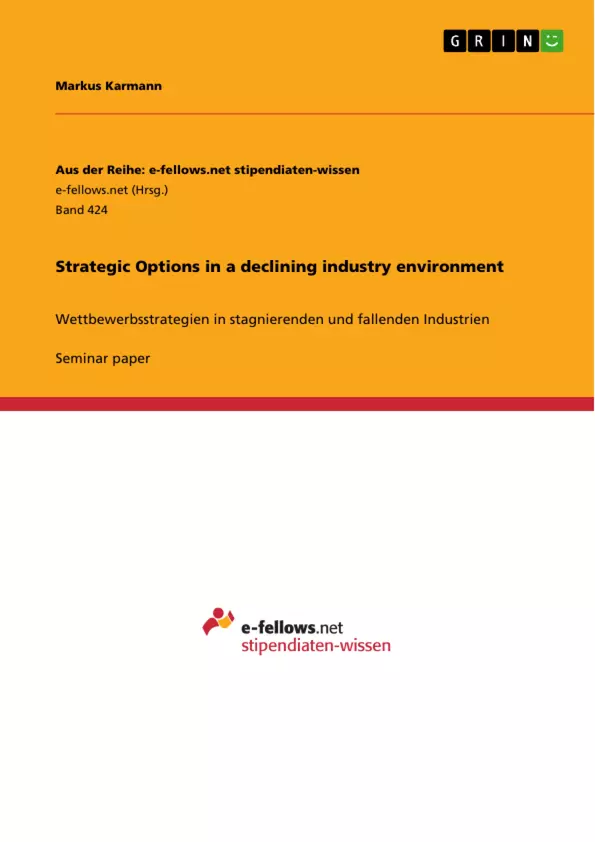At some point in time, business students around the world will most likely be confronted with the famous product and industry life cycle. This tool is mainly used as a marketing instrument. It offers advertising and investment directions for each of the three to five stages of the cycle. Everything in this theory seems obvious and clear, until the “decline” stage of the cycle is reached. The question is, is there really only one option, namely to harvest and then divest, in the last phase of the life cycle? Is the decrease in revenues and profits inevitable?
The past shows that this is not necessarily the case. Some companies actually did generate profits and proved to be quite successful in a difficult market environment. Take for example the fountain pen maker Mont Blanc. The market for fountain pens has been declining for decades due to technological change (invention of typewriters and computers) and also consumer preferences. However, Mont Blanc has set up a selective shrinkage (“niche”) strategy by attracting high-income professionals and promoting their fountain pens as a luxury good. As a result, the company has achieved stable revenues and high margins within a declining industry (Grant 2010).
In the following, this paper will examine what a declining industry is, what characteristics a declining industry shows and what strategic options companies within such an industry environment have.
Table of Contents
- Introduction
- Declining industries: characteristics and reasons
- Strategic options in a declining industry environment
- Factors influencing the attractiveness of a declining industry.
- Strategic options for companies in declining industries
- Trajectories of industry change
- Summary and conclusion
Objectives and Key Themes
This paper explores the concept of declining industries and the strategic options available to companies within such environments. It aims to challenge the conventional wisdom that the only viable option in the decline stage of the industry life cycle is to harvest and divest.
- The characteristics and reasons behind declining industries.
- Factors influencing the attractiveness of a declining industry.
- Strategic options for companies in declining industries.
- Trajectories of industry change.
- The potential for success in a declining industry environment.
Chapter Summaries
The first chapter introduces the concept of the industry life cycle and challenges the assumption that decline inevitably leads to divestment, highlighting examples of companies that have thrived in declining industries. The second chapter delves into the characteristics and reasons behind declining industries, outlining the stages of the industry life cycle and the factors contributing to decline.
Keywords
Declining industries, industry life cycle, strategic options, competitive advantage, market share, niche strategy, harvest strategy, divestment, trajectory of industry change.
- Citation du texte
- Markus Karmann (Auteur), 2012, Strategic Options in a declining industry environment, Munich, GRIN Verlag, https://www.grin.com/document/193113



